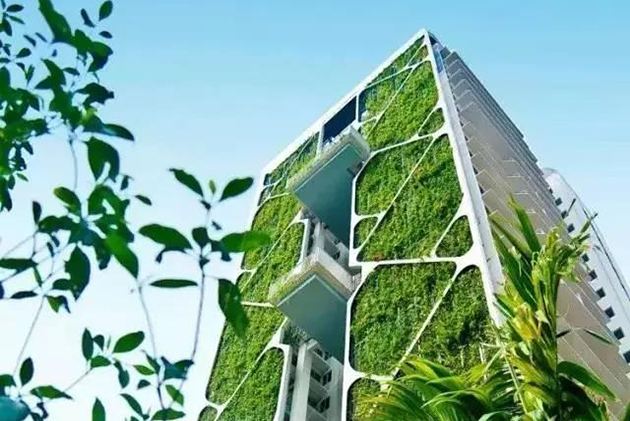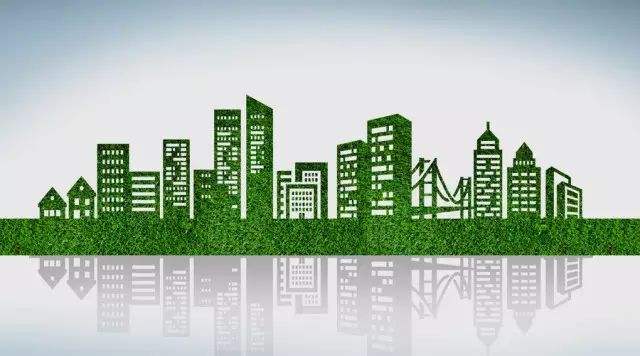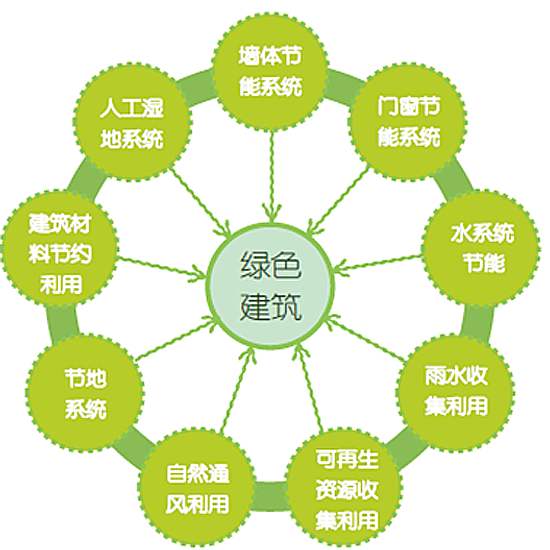Tackling climate change "green building" and promoting emission reduction
Every year, about 5 billion tons of energy are consumed and 13 billion tons of carbon dioxide are emitted.
This data comes from the construction industry, which seems to have little to do with climate change but contributed nearly 40% of global carbon emissions in 2017.
How to change the status quo? At the 24th "climate Salon" of China Agenda 21 Management Center (hereinafter referred to as "the 21st Century Center"), experts' opinion is that building emission reduction should add a touch of "green" to cope with climate change.
Great potential of building emission reduction for climate change mitigation
According to the 2019 emission gap report of the United Nations Environment Programme, the global total carbon emissions continue to rise. If the greenhouse gas emission gap fails to be successfully closed by 2030, even if the national independent emission reduction contributions submitted by countries under the current Paris Agreement are realized, the global temperature growth may still exceed 2 ℃.
"This pessimistic situation is most vividly reflected in the prediction of" peak carbon emission " Zhang Xian, deputy director of the social division of the 21st Century Center, said at the climate salon that so far, 49 countries have reached the peak of carbon emissions, accounting for only 36% of global emissions. Even by 2030, only 57 countries are expected to reach peak emissions, accounting for 60% of global emissions. "This means that the realization of the goal requires higher requirements for the contribution of countries to emission reduction." Zhang Xian said.

The construction industry is a key area of global carbon emission reduction, accounting for 36% of global energy consumption and 39% of global carbon emissions. According to the results of quantitative analysis of construction activities and climate change, He Jing, senior architect of China Academy of architectural design and research, believes that "construction may be the industry with the largest proportion of resource consumption and environmental load in the whole social and economic activities."
In contrast, although the total carbon emission of buildings in China shows an overall growth trend, the growth rate of building energy consumption and carbon emission has slowed down significantly. According to the data from China Building Energy Consumption Research Report (2018), China's building energy consumption and carbon emissions dropped significantly during the 11th Five Year Plan and the 12th Five Year Plan, and the growth rate has declined about 74% since the 18th National Congress of the Communist Party of China. The carbon emission intensity per unit area of construction in China is 36 kg CO2 / m2, which is lower than the level of developed countries. In the future, with urbanization and economic level improvement, the potential of emission reduction is huge.
Climate change directly affects the development of green buildings
Climate change is an indisputable fact, and adaptation to climate is the basic attribute of architecture.
Liu Jiaping, academician of the Chinese Academy of engineering and Dean of the school of architecture of Xi'an University of building science and technology, found that the climate adaptability and resource consumption of traditional Chinese architecture are consistent in the life cycle of both Beijing siheyuan and Huipai Architecture - the same kind of regional architecture obeys the same "technical prototype" and is controlled by indicators related to climate conditions. "The core indicators of green buildings are related to climate conditions. Climate change affects China's building energy consumption control objectives, especially regional climate change has a great impact on the development of green buildings," academician Liu Jiaping said at the climate salon.
From a macro perspective, global warming has an impact on the division of China's building climate zones, especially on the determination of North-South heating lines. Moreover, climate warming and climate anomalies have also brought huge pressure on the control of China's building energy consumption and total carbon emissions. From the microcosmic point of view, climate change has increased the burden of air conditioning energy consumption, and at the same time, it has an impact on the indoor and outdoor thermal environment of buildings.

The reporter learned that in the 2019 edition of green building evaluation standard issued in March this year, green building has been redefined - in the whole life cycle, saving resources, protecting the environment, reducing pollution, providing people with healthy, applicable and efficient use space, and maximizing the harmonious coexistence of human and nature to achieve high-quality buildings.
Scientific and technological innovation promotes green building emission reduction
Green building advocates "harmonious unity" between human and nature, but modern urban people can not give up convenient and efficient life. How can we resolve conflicts? The answer is "technology.".
Because technology is the main driver of reducing carbon emissions.
In the 21st century, the center analyzed the "driving factors of carbon emission of building operation energy consumption" during the period of "the Tenth Five Year Plan" to "the Twelfth Five Year Plan". It was found that technological progress was the key factor to produce negative effects on carbon emission, and the proportion of emission reduction technologies in the construction field that could achieve both emission reduction and profitability exceeded 60%.

"Many years of practice have proved that relying on scientific and technological innovation and promoting green transformation in the field of construction, remarkable achievements have been made in curbing the rapid growth of building energy consumption and slowing down the emission of greenhouse gases in construction." Said Ke Bing, deputy director of the 21st Century Center. The national medium and long-term science and technology development plan released in 2006, for the first time, listed urbanization and urban development as a key area separately, and green building and building energy conservation as the priority theme received sustained support and development of science and technology. It should be fully noted that the continuous improvement of urbanization and economic level is a specific historical stage of China's development, China's green development is synchronized with the rapid development of urbanization, and China's green, low-carbon, emission reduction is an important demand for the development of the construction industry and the sustainable development of urbanization.
(source: Science and technology daily)